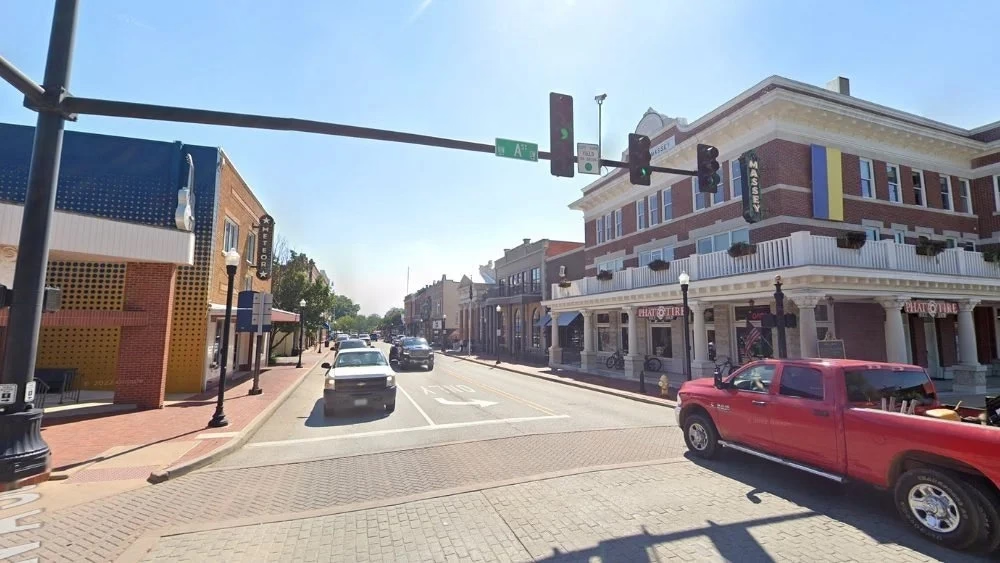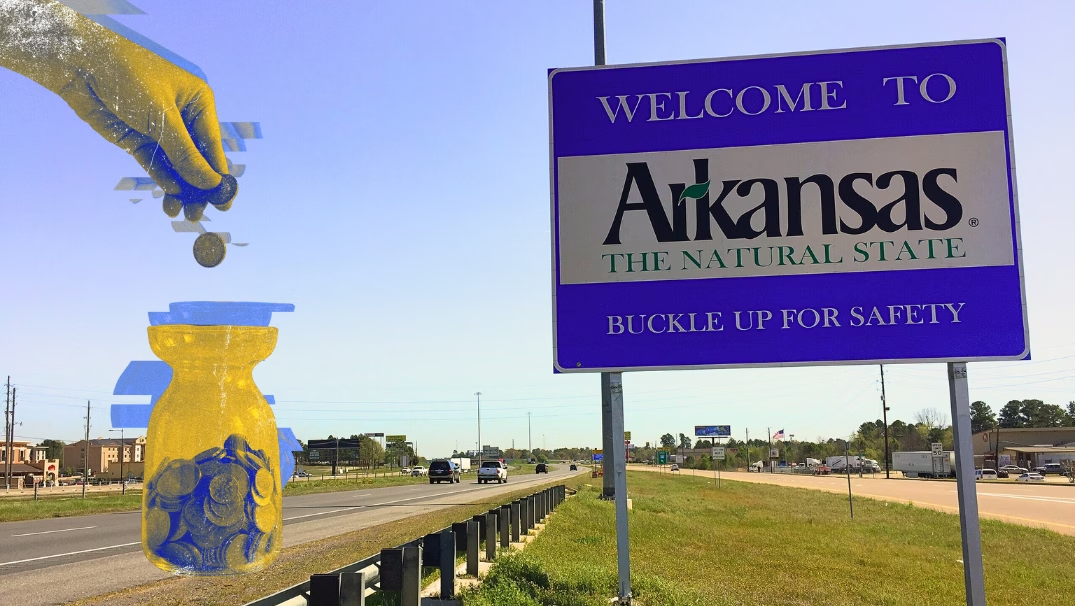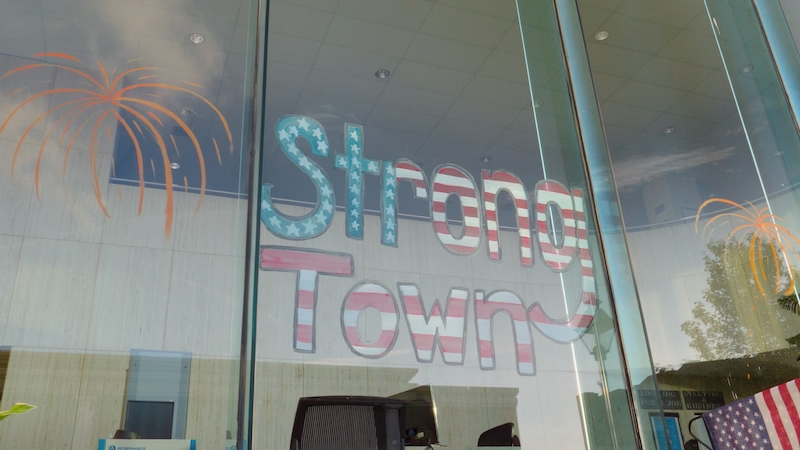Editor's Note: The challenges our cities face are growing, but so is the strength of this movement. Every story we share, every idea we spread, and every tool we build exists because people like you are committed to showing up. Your membership isn’t passive—it’s the momentum that makes change possible.

“I was actually surprised at how well my region (Northwest Arkansas) is doing compared to the rest of the nation,” Strong Towns member Aaron Caldwell noted after running Fayetteville’s financials through the Strong Towns Finance Decoder. “I think we have made some good decisions but maybe [it] is still in the ‘sugar rush’ phase of development.”
On paper, Fayetteville’s results look strong—and in many ways, they track with the city’s land use choices. In 2015, Fayetteville became the first city in Arkansas to eliminate parking mandates, removing a costly barrier for small businesses and making it easier for housing and commercial infill to take root. The city has also resisted some of the most aggressive forms of outward expansion, maintaining a relatively compact urban footprint compared to its peers.
This Strong Towns video explores how Fayetteville took ownership of its downtown once it lifted restrictive and costly parking mandates.
But Caldwell’s “sugar rush” question points to something deeper. Strong Towns has long described how a city can appear fiscally healthy during periods of rapid growth, as new development brings in one-time revenue from fees and taxes. This is the early stage of the Growth Ponzi Scheme, when the liabilities for maintaining new infrastructure haven’t yet come due.
Even Fayetteville, Caldwell cautions, might be in that early phase. “We’re in a revenue boom from massive population growth, but we’re also building enormous infrastructure: the I-49 expansion in south Fayetteville, Highway 412/612 bypass in Springdale, Highway 112 expansion that spans the region. Those projects alone represent a lot of concrete our future population will have to maintain. The question isn’t whether we can afford to build it now but whether we can afford to maintain it in 30 years.”
Comparing Growth Patterns Across the Region
Fayetteville isn’t the only municipality under the microscope. “I was also shocked to see such a small town doing so well!” Caldwell said of nearby Siloam Springs, population 20,000. While he cautions that the overall data may hide nuances, he suspects the city’s performance is tied to its more compact footprint and downtown investments—traits that have helped it avoid the most costly liabilities of sprawl.
Springdale’s results were a bit more sobering. “I was shocked to see how poorly Springdale was doing compared to other cities in Northwest Arkansas.”
All three cities Caldwell examined have seen explosive growth over the past 30 years. But he suspects Springdale’s trajectory is tied to the way it grew—expanding outward more than its neighbors and building extensive suburban infrastructure to serve new residents.
There’s also a regional dynamic at play. “Northwest Arkansas developed as a region, not individual cities,” Caldwell explained. “Springdale residents can easily take a very short drive to less sprawled areas to spend money, so Springdale bears the infrastructure costs while other cities capture the revenue. They probably expanded too fast relative to revenues to sustain their development pattern.”
To its credit, Springdale has been investing in neighborhoods where daily needs are closer together, and its work on downtown Emma Avenue “shows real promise.” Still, he says, “there is probably more going on here that we can’t see in the data yet that Springdale will need to address.”
From Data to Decisions
For Caldwell, running the numbers was just the start. He’s now working with partners on a comprehensive report for Northwest Arkansas and the River Valley, built around one simple message: You can’t sell your roads and pipes.
“Our planning must account for the long-term financial obligations of growth, especially for maintenance costs that come due decades later,” he said. “A few local officials are already reaching out about next steps, which is encouraging. Our region is blessed with exceptional city staff who’ve been incredibly supportive. Moving forward, I want to see finance and planning departments working in tandem, and I’d love to see more municipalities adopt revenue-analysis tools like ZacTax to make smarter growth decisions.”
That work comes with a big caveat: not every city has the data needed to even run an analysis. “Most municipalities in our area don’t file Annual Comprehensive Financial Reports (ACFRs),” Caldwell said. “Rogers, one of our major cities, doesn’t even follow Generally Accepted Accounting Principles (GAAP), which results in an ‘Adverse Opinion’ on their audit report every year. It doesn’t necessarily mean anything is wrong, but it creates a significant barrier to a Finance Decoder analysis.” One of his recommendations: require GAAP-compliant ACFRs for all “Cities of the First Class,” or cities with significant populations, in Arkansas.
Caldwell is optimistic about Northwest Arkansas’s future. “We have all the right ingredients: outstanding municipal staff, informed elected officials, and a robust network of housing advocates and planning experts,” he said. “You can see a lot of good ideas taking shape—infill projects in Bentonville and Fayetteville, extensive shared-use paths, pedestrian improvements regionwide. I think people will be fairly impressed with what we’ve done as a region next year at the CNU Annual Congress and Strong Towns National Gathering.”
If the region can continue to channel that energy into development that builds places instead of just projects, Caldwell believes it could become one of North America’s most financially stable and livable urban areas. The Finance Decoder, in his view, is just the start of asking the right questions.
That’s the whole point. The Finance Decoder doesn’t replace local knowledge or audit-level detail—but it does break down critical trends in a way that makes them visible. The graphs aren’t endpoints; they’re entry points. They’re the start of a conversation, not the final word. And in city after city, that conversation is long overdue.





